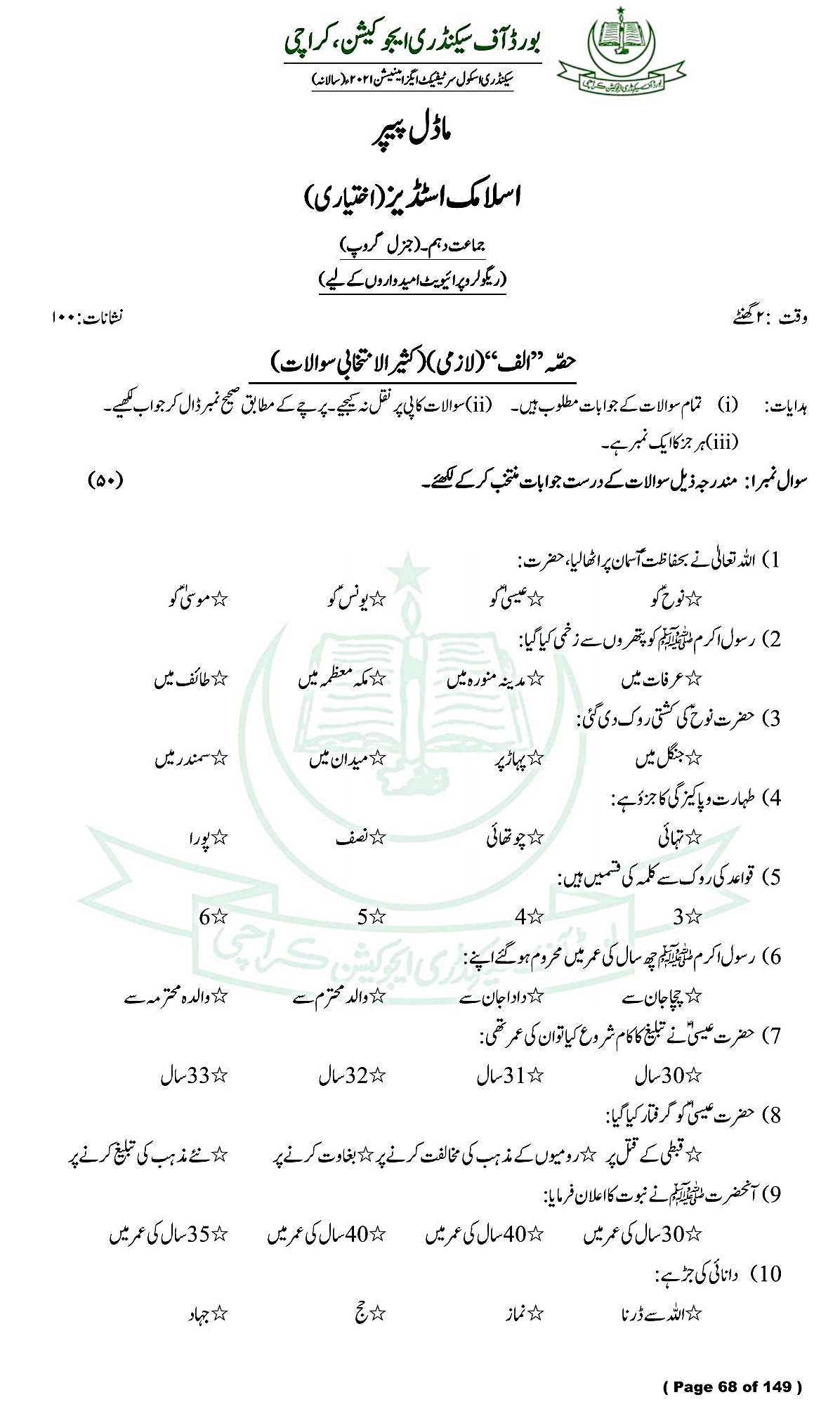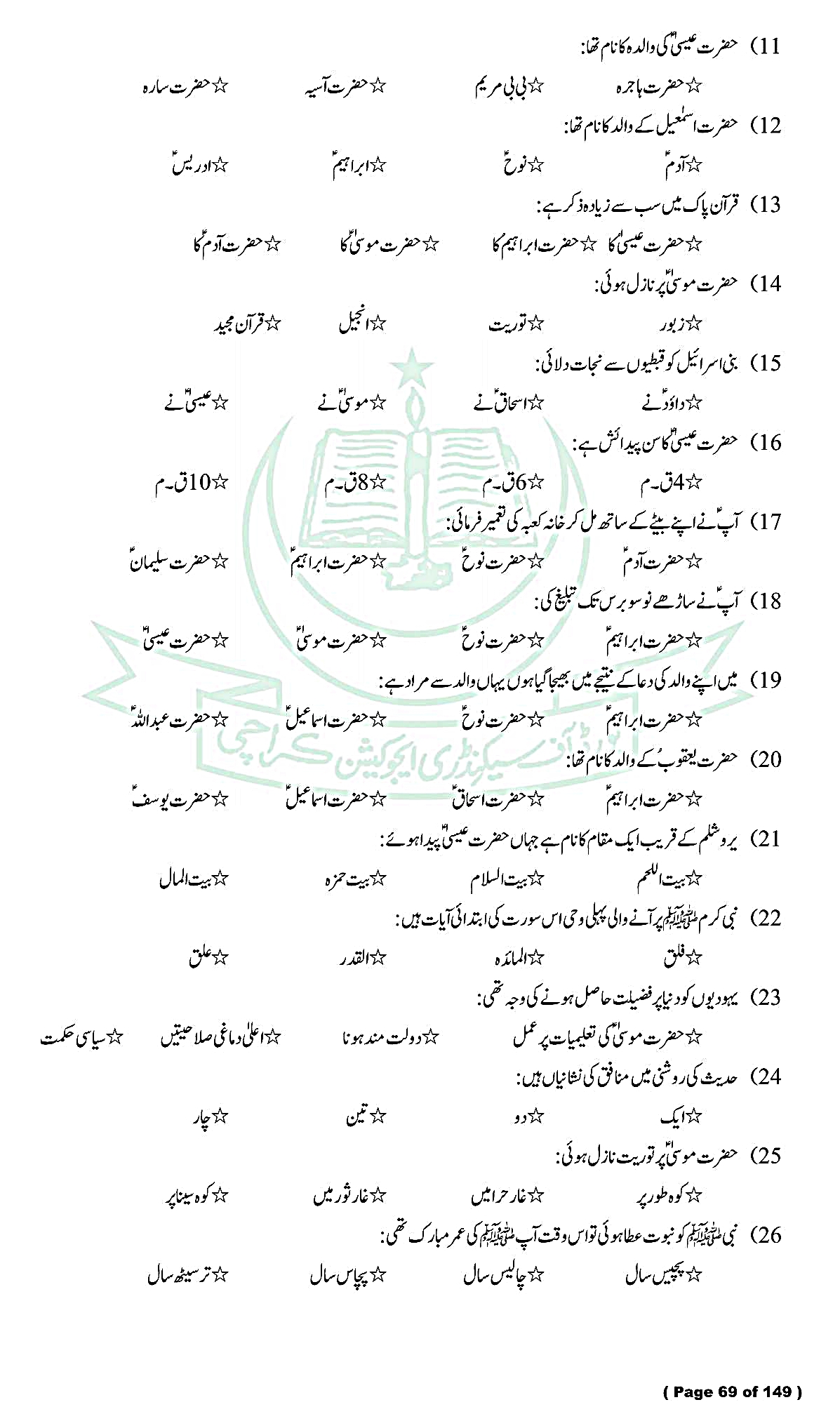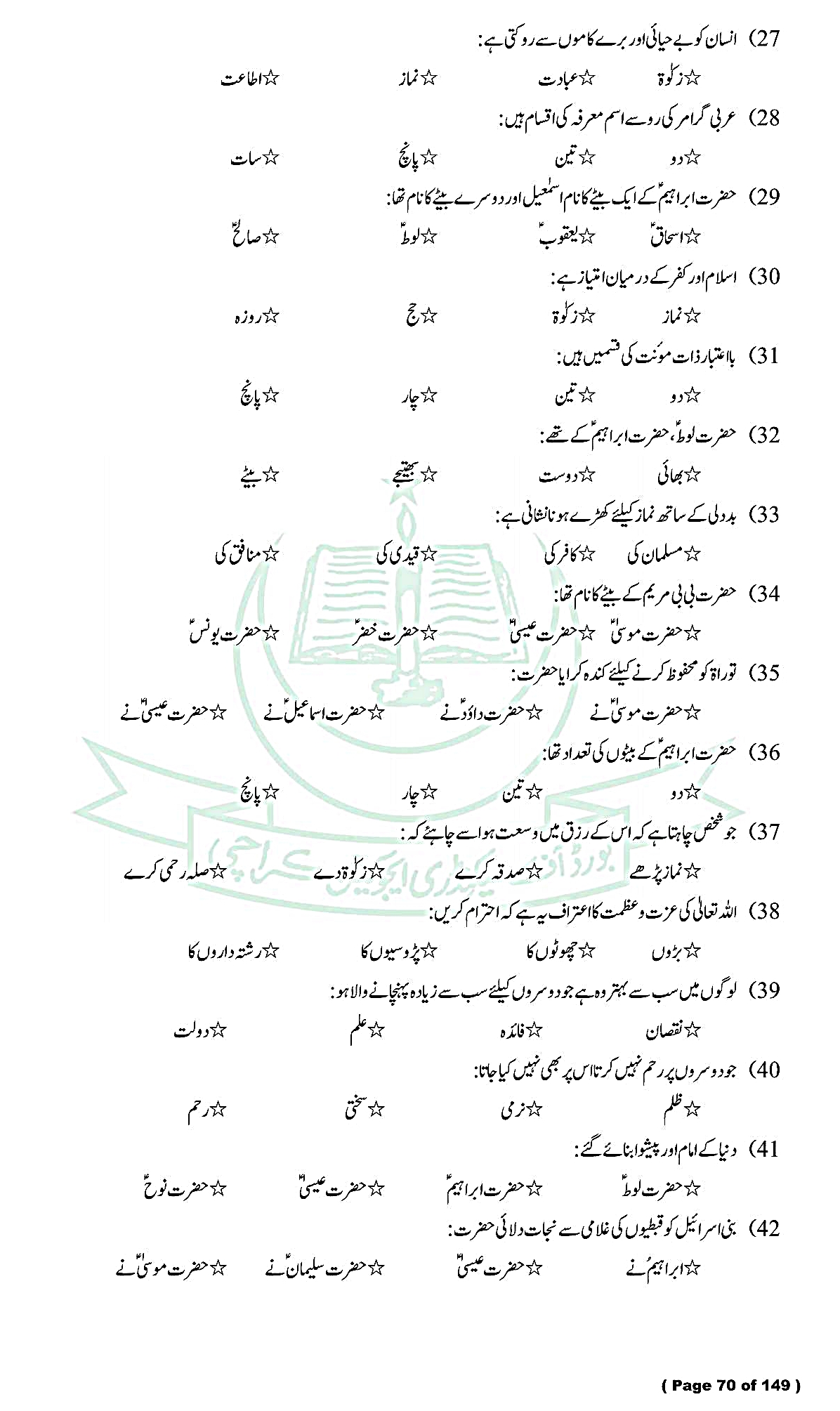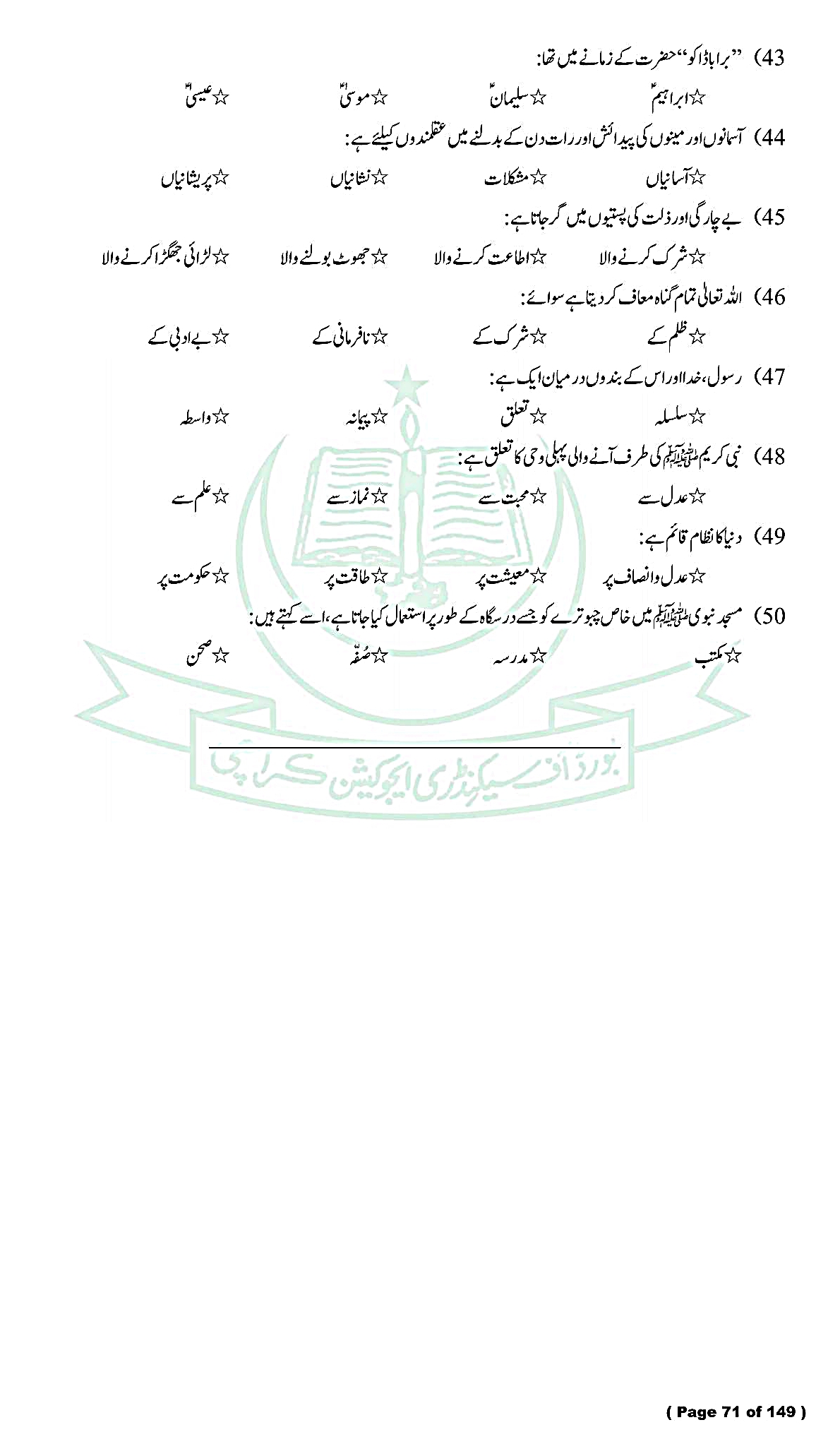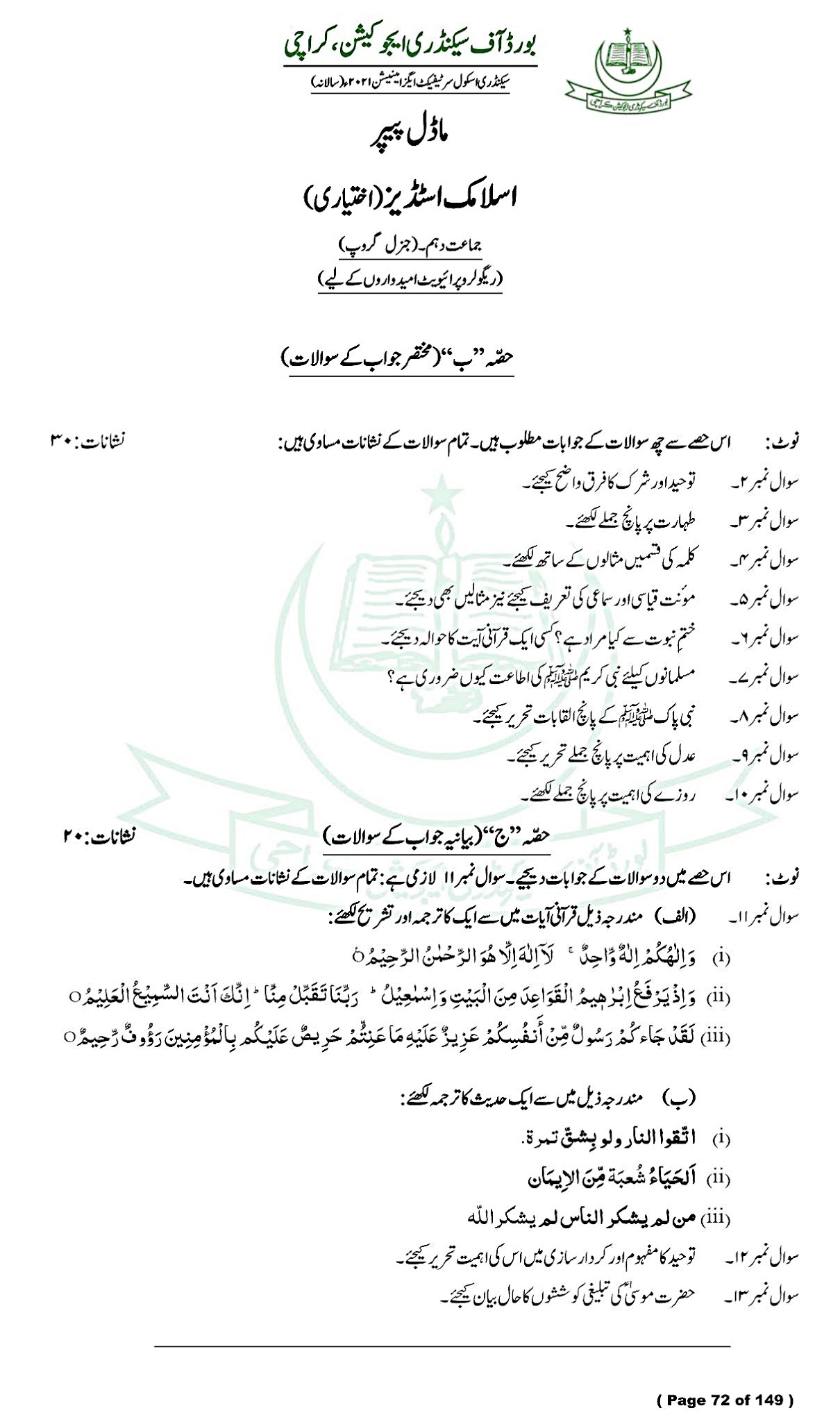Chapter No.5: Computer Security and Ethics
Short Questions Answers And Text Book Exercise
Text Book Exercise
B. Respond the following:
1. Why is computer security important? Write any three reasons.
Ans: COMPUTER SECURITY:"Computer security is the protection against theft or damage to our computer hardware, software and information present on them from threat of viruses or unauthorized use."
Explanation:The computer has become an important part of our life. We store important data on our computers in the shape of documents, pictures, programs, etc. Therefore, we expect that all our information must remain safe and our computer runs properly without any problem.
Few threats can cause problems for our computers. These threats may be different types of viruses or unauthorized use of a computer. To prevent our computer from such threats, we need to abide by computer security.
Reason Of Importance of Computer Security:- Prevent from viruses and malware:
► Computer security is important for our computer's overall health.
► It keeps our information protected and helps prevent viruses and malware, which allows programs to run quicker and smoother.
- Secure Private Information:
► It safeguards confidential and sensitive information.
► The advancement in science and technology has changed day to day activities. We rely on computers and mobile phones, where we access a lot of information which we do not want to share with others. This information may include our passwords, banking details, contacts, pictures, etc. To protect this information we need to make our devices secured that no one can damage or access this information without our consent.
-
Provide Safe Environment:
► Computer Security is important as it enables people to perform their work in safe environments.
►It helps in the execution of essential business processes.
2. Explain Cyber Bullying with an example.
Ans: Cyber Bullying or Harassment:
Cyber bullying or harassment is a type of cyber-crime in which electronic means like a computer, mobile phone or internet are used for online bullying or harassment.
Example:
Harmful bullying behavior can include:
-
Posting rumors
-
Threats
-
Passing inappropriate remarks
-
Leaking personal information
-
Blackmailing and
-
Committing hate speech
Effect Of Cyber Bullying or Harassment On Victim:-
The perpetrator does it with the intent to cause harm to the victim.
-
Victims may experience lower self-esteem, intent to commit suicide and a variety of negative emotional responses, including being scared, frustrated, angry and depressed.
3. Why is information accuracy important?
Ans:
INFORMATION ACCURACY:
The information accuracy is the type of measurement that assures the information is correct and true.
Importance Of Information Accuracy:-
Information accuracy is important because inaccurate information is harmful in different fields like medical history, Business records, Government data, etc.
-
It is necessary that the information should not be generated from the malicious data.
-
For information accuracy, the data must be from reputable sources.
-
In the era of information explosion, we need to be more careful while using or disseminating information. The use of unreliable sources results in inaccurate information.
-
Especially, the accuracy of information shared on social media is often questionable.
4. What is Ethical Hacking?
Ans:
Ethical Hacking:
Ethical Hacking sometimes called as Penetration Testing is an act of intruding / penetrating into system or networks to find out threats, vulnerabilities in those systems which a malicious attacker may find and exploit causing loss of data, financial loss or other major damages. The purpose of ethical hacking is to improve the security of the network or systems by fixing the vulnerabilities found during testing. Ethical hackers may use the same methods and tools used, by the malicious hackers but with the permission of the authorized person for the purpose of improving the security and defending the systems from attacks by malicious users.
Ethical hackers are expected to report all the vulnerabilities and weakness found during the process to the management.
5. Your friend has become a victim of cyber harassment. What two advices will you give him or her?
Ans: Pakistan is in the list of the fastest-growing countries that are using the internet. This opens the doors for the fact that cyber bullying is increasing as well but yet there is no legislation for cyber-crimes in Pakistan.
If my friend becomes the victim of cyber harassment, I will give him advice that:
(i) Report To Trusted People:
First thing is to report such incidents to the trusted people that are highly likely parents and teachers.
(ii) Complaint To Government Authorities:
Write down an application (in English or in Urdu), describe complete problem, provide as much evidences, details as he/she can and send it to FIA National Response Center for Cyber Crimes. OR send an online complaint through the form available on the website or by calling helpline 1991 which is available 24/7.
6. Write any two measures to avoid email account hacking.
Ans: Email attachments have been a popular medium to spread viruses and hack email accounts.
To avoid email account hacking, we should take following measures:
Do not open email attachments or click on hyperlinks from unknown senders:-
The infected emails may come from an unknown or fake email address.
-
Users must check the origin of the email before opening the attached files or clicking any link that is given in the email.
-
People in our contact list may also send us infected files as they may not be aware of it themselves.
Spam or junk mails must be checked carefully before clicking on its attachment:-
Use spam blocking or filtering tools to block unsolicited emails, instant messages and pop-ups.
-
Do not click on internet links which have unusual labels, images or captions in spasm emails.
-
Only download attachments from trusted sources.
7. How is software piracy harmful for software developers?
Ans:
Software Piracy:
Software piracy is referred to the illegal use, copying or distribution of copyrighted software.
Impact Of Software Piracy On Software Industry and developers:
Software piracy is a huge threat to the software industry and developers..
-
It causes a significant loss of revenue for developers and vendors.
-
Because of piracy, vendors have fewer resources to devote to research and development of new products.
-
Since they earn less profit, they are forced to pass these costs on to their customers.
-
Software companies have tried various techniques to stop software piracy but most of them have remained unsuccessful.
- They applied for copy- protection which demands the user to enter certain keys or credentials. Today, most software require registration which is mainly online. However, these measures could not stop software piracy.
8. Give two examples of phishing.
Ans:
Example Of Phishing:
1. False Emails:
In Phishing, perpetrators contact the target person through email, telephone or text message and pose as a legitimate and trusted individual. He or she asks the target to provide sensitive data such as personally identifiable information, banking and credit card details and passwords for different reasons.
2. Fake Websites:
In Phishing, perpetrators send phishing emails that include links to fake websites, such as the mobile account login page or for a known mail provider, asking the victim to enter their credentials or other information into the fake site’s interface.
In both cases, the information is then used to access different accounts and can result in identity theft and financial loss.
9. What is an Intellectual Property Right?
Ans:
Intellectual Property:
When any person develops software, writes a book or research paper or invents any method or the machine, it becomes the intellectual property of that person. Thus Intellectual property is intangible creations of the human intellect.
Intellectual Property Right:
Just like other property the intellectual property can be stolen. To prevent theft or illegal use or spread of intellectual property, Intellectual Property Right is exercised.
-
Through these rights, intellectual property is protected with the help of copyrights, patents, and trademarks.
-
They allow creators or owners of patents, trademarks or copyrighted works to benefit from their work or investment.
- Under these rights, no other person or organization can copy or reproduce any other's intellectual property.
-
Intellectual property rights are acclaimed worldwide.
-
In Pakistan, Intellectual Property Organization ( IPO ) regulates the matters regarding intellectual property rights.
10. Differentiate the following on the given criteria. OR Define and differentiate various types of viruses: Malware , Virus, Worm, Adware and Spyware.
| Criteria |
Virus |
Worm |
Adware |
Spyware |
|---|
| Level of danger | Viruses are harmful.
They can range from displaying irritating messages to make all the documents inaccessible or even delete them. | Harmful as It can do several malicious tasks to cause damage | Normally, these are not as dangerous as other malware.
| Poses high-risk threats.
can completely shut down computer, or
permanently erase or damage files. |
| How is it initiated? | Viruses generally latch on a host file and when they execute they infect other files or programs. | A worm can replicate itself without any human interaction. It does not need to attach itself to a file or program to cause damage. | Adware is advertising-supported software or programs include games, desktop toolbars or utilities.
Commonly, adware is web-based and collects web browser data to target advertisements, especially pop-ups. | Spyware can come through cookies or even when we install software without reading its terms and conditions. |
| Damage that can be done to data and hardware | It can also modify other computer programs, insert its own code and change computer settings. | It can do several malicious tasks, such as dropping other malware, copying itself onto devices physically attached to the affected system, deleting files, and consuming internal storage and memory resources. | They present endless ads and pop-up windows that could potentially consume memory and processing resources. Adware can also change the different settings of internet browsers like homepage and default search engine. | Spyware takes control over a mobile phone or computer without the user's knowledge.
They capture information like web browsing history, e-mail messages, usernames and passwords and online payment information. |
| Effect on computer speed | Slower operating speed | Slow down computer performance | Adware annoys the user and slows down the processing. | Slowing down computer performance, even shut down system |
| Means to spread |
A computer virus is a computer program that can spread across computers and networks by making copies of itself, usually without the user's knowledge.
Boot Sector, Resident, Macro Viruses and File Infector are some examples of viruses. | A computer worm spreads copies of itself from computer to computer. | Adware is advertising-supported software.
The advertisements produced by adware are sometimes in the form of a pop-up or sometimes in little windows that may not be closed. | Spyware can come through cookies or even when we install software without reading its terms and conditions.
System monitors, cookies trackers, rootkits and key-loggers are few examples of Spyware. |
C. Match the columns:
| S.NO. |
A |
S.NO. |
B |
C |
|---|
| (i) | Presenting someone's ideas as your own without acknowledging the author. | (a) | Adware | (i) (e) |
| (ii) | An advertising software that presents ads and pop-up windows to spread virus. | (b) | Cracker | (ii) (a) |
| (iii) | Crime that is committed through a computer system. | (c) | PIN | (iii) (f) |
| (iv) | A secretive security code that verifies user's identity. | (d) | Antivirus | (iv) (c) |
| (v) | A person that gains unauthorized access to other computers by bypassing passwords. | (e) | Plagiarism | (v) (b) |
| (vi) | A utility software that prevents threats and data loss from a computer. | (f) | Cybercrime | (vi) (d) |
Short Answers
Q.1: Explain how to seek help against Cyber-Crime
Ans:
Seek Help In Case of Becoming a Victim-
Report To Trusted People:
First thing is to report such incidents to the trusted people that are highly likely parents and teachers. -
Complaint To Government Authorities:
The government has also taken measures to curb cyber crimes especially cyber bullying and harassment.
In Pakistan, the National Response Center for Cyber Crimes has been set up to help the victims of cyber crimes. An online complaint can be launched through the form available on the website or help may be sought by calling helpline 1991 which is available 24/7.
Q.2: Identify that a virus, worm, adware, spyware and Malware can spread through different ways?
Ans:
Virus:
A computer virus is a computer program that can spread across computers and networks by making copies of itself, usually without the user's knowledge.
Worm:
A computer worm spreads copies of itself from computer to computer.
Spyware:
Spyware can come through cookies or even when we install software without reading its terms and conditions.
Adware:
Adware is advertising-supported software. The advertisements produced by adware are sometimes in the form of a pop-up or sometimes in little windows that may not be closed.
Activity
Activity 1:
Organize a poster exhibition in which students suggest measures to the audience how to use the computer and the internet safely. Some focused topics may be:
-
Prevent your computers from Viruses and Malware.
-
Say no to cyber bullying and harassment.
-
Say no to piracy and plagiarism.
-
How to cope with cyber crimes?
Activity 2:
During classroom discussion put the following situations before students and discuss what will they do in such a situation? And why?
- You receive a phone call. The caller claims that you have won a huge prize and for delivering the prize they need an advance payment.
- You receive a file from an unknown email address which asks your bank account details or user Email ID and Password.
-
While surfing an unknown website, the website demands to access content by providing your Facebook or Gmail account's credentials.
Activity 3:
Make a list of the services that free antivirus software does not offer.
Activity 4:
Search newspapers or internet to nd any news about a cyber crime. Specially in which the criminal was caught and punished.
Activity 5:
Thesis and research articles are generally checked through Turnitin which is an Internet-based paid plagiarism detection service.
There are other free online services where students can check the plagiarism in their document. Some are:
www.duplichecker.com
www.quetext.com
www.plagscan.com
Write an essay on any topic, and copy and paste some text from internet websites in your essay. Then check plagiarism of your document.
